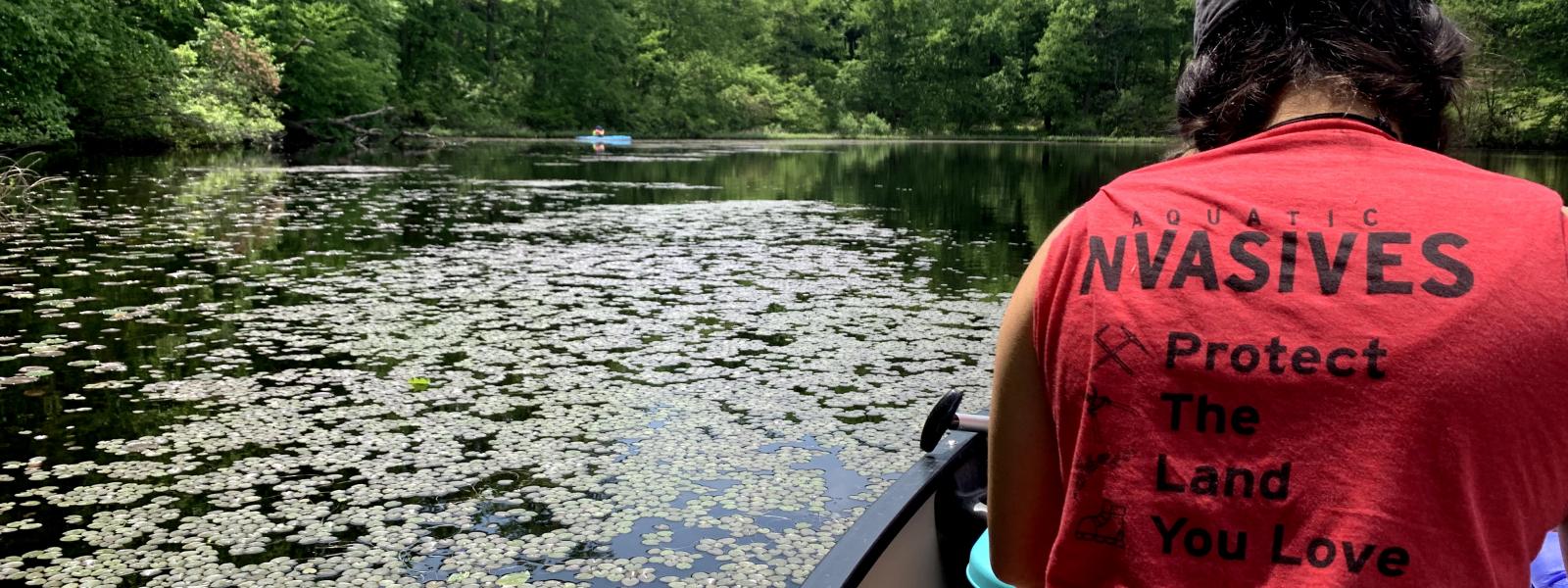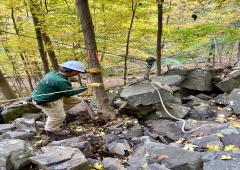Aquatic Invasives Strike Force Conservation Corps Crew

Meeting Place:
Varies with work trip. Please see upcoming events for more details.
Work Days:
May run any day
Frequency:
No result found here.
About the Crew
The Aquatic Invasives Strike Force (AISF), a Trail Conference Conservation Corps crew funded through the Lower Hudson PRISM, is committed to preventing the spread of aquatic invasive species through education and outreach to active users of New York’s waterways while supporting management efforts through early detection surveys and manual removal of target species.
The AISF crew spends the season surveying and mapping aquatic invasive species occurrences throughout the Lower Hudson region, which are critical for early detection and rapid response efforts. The crew also participates in manual removals of invasive species like water chestnut (Trapa natans), monitors water quality, assists in outreach events and trainings, as well as conducts watercraft inspections for the Lower Hudson PRISM Watercraft Inspection Steward Program. The AISF crew is managed, in part, by the LHPRISM Aquatic Invasive Species Program, hosted by Teatown Lake Reservation.
If you enjoy working outdoors and want to learn more about aquatic invasive species, volunteering with the Aquatic ISF Crew is for you!
Work trips are led by Trail Conference's on-staff field manager and Conservation Corps members.
Where We Work
The Aquatic Invasives Strike Force Crew holds work trips at various water bodies throughout the Hudson Valley.
Training
No experience is necessary! Beginners are welcome and we provide on-site training for each worktrip.
Register to Join Us!
You can check out the crew's upcoming events to volunteer with the crew. Please register online so the crew will know to expect you.
Upcoming Work Trips
News

